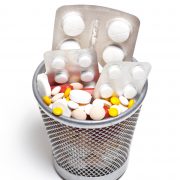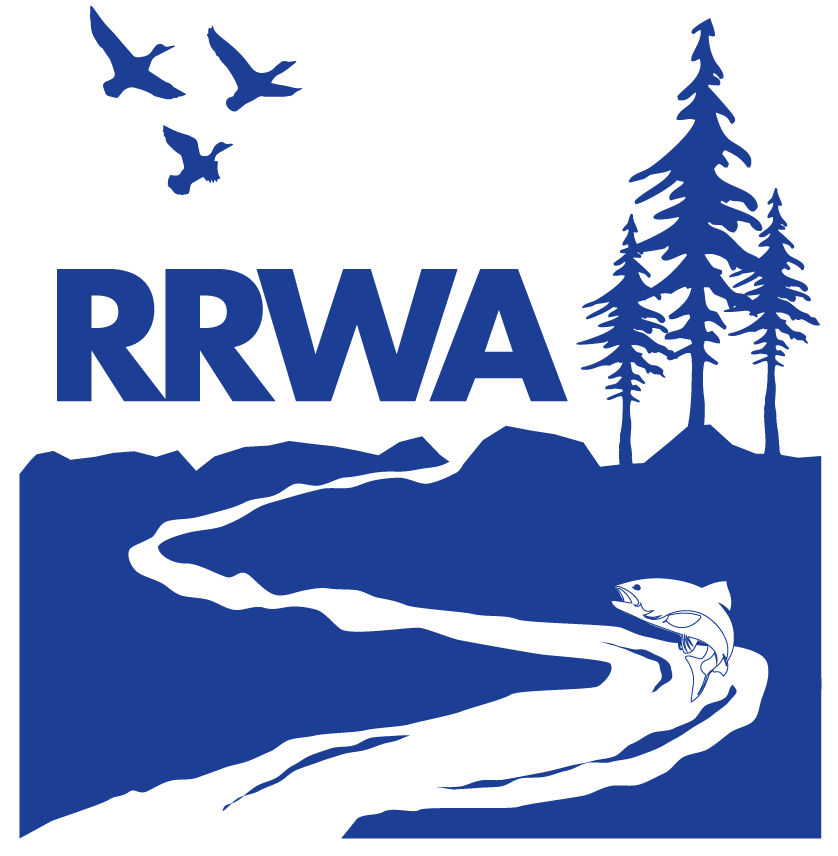Safe Medicine Disposal Program
Have you ever opened your medicine cabinet, picked up a bottle, and realized it has been expired for years or that you had more than you would ever need? A survey in Los Angeles County found that 59% of respondents had medications in their homes that were expired or no longer needed, with 45% of these people not knowing what to do with them. In California there are approximately 9.2 retail prescriptions written per year per person. This makes a whopping 359 million prescriptions a year! That’s a lot of medications that may be sitting in homes, or are being dumped into landfills, or flushed into our water resources. When flushed down the drain, some medications are not completely removed by certain kinds of wastewater treatment plants. Proper disposal of unused pharmaceuticals helps protect the environment and keeps the medications out of the wrong hands.
Safe Medicine Disposal Program
To address this issue, the Russian River Watershed Association (RRWA) has been partnering with local agencies, pharmacies, and law enforcement offices to provide a Safe Medicine Disposal Program with drop-off locations throughout Sonoma County and Mendocino County. The Safe Medicine Disposal Program creates a free resource for residents to drop off unused and unwanted medications in a safe manner that protects our families, wildlife and watershed. Residents of Sonoma and Mendocino Counties can view a list of drop-off locations, and access information on how to participate in the mail-back programs, by visiting www.safemedicinedisposal.org.
Why does safe medicine disposal matter?
Medications can be a threat to anyone and anything who it wasn’t prescribed to. When medications, especially prescription medications that you no longer need, are left in your home they could easily get into the wrong hands. Unused and readily accessible medicines have the potential to be misused and abused by teens and adults while colorful pills and packaging can be attractive for young children. In order to avoid this misuse and just to remove clutter, some people end up flushing medications or throwing them in the trash. These disposal methods can affect our water quality. When medicines are flushed, they are transported to our waste water treatment plants. With all the new and innovative prescription medications, some treatment plants are not equipped to handle all the chemicals, and they can be released into our rivers and streams or infiltrated into the ground. When medications are thrown away, they are taken to landfills. During the rainy season, these medications can become runoff and can potentially make their way into the groundwater or to our rivers. When introduced into our environment, these medications can greatly affect wildlife, pets, and people who are visiting the river.
Highlights of SB212
To address the growing need for proper medication and sharps disposal, California signed Senate Bill 212 into law in 2018 which will create a Drugs and Sharps Take-Back Program for all California residents. This law will be the first in the nation to establish a comprehensive, producer-funded take-back program to provide safe and convenient disposal options for both home generated pharmaceutical drugs and sharps waste. The manufacturers of these products will be responsible for setting up the program, paying for the program and providing comprehensive public education to promote consumer participation in the program. New collection sites will be established for the take-back of medications. Individuals without the ability to deliver their medications to a bin will be able to request prepaid, preaddressed mailing envelopes for safe disposal of their medications. Sharps will be collected through a mail-back program where consumers will receive a sharps container and mail-back kit at time of purchase. There will be State oversite of this program through the California Department of Resources Recycling and Recovery (CalRecycle). It is expected that this program will be in place in 2022. Once implemented, this program will greatly expand the existing take-back opportunities in Sonoma County and Mendocino County. In the meantime, residents are encouraged to utilize the existing Safe Medication Disposal Program www.safemedicinedisposal.org.
Sharps
It is illegal to dispose of home-generated syringes/needles in the garbage. This includes needles, syringes and lancets used for the care of people and animals. More and more sharps are being found in our city streets, parks and along our streams and rivers. Additionally, sharps are being illegally disposed of in curbside garbage and recycling bins creating a hazard for workers who sort and come in contact with these materials. By 2022, convenient disposal will be available for unwanted sharps through the State program required by SB 212. Until that time, there are other options available for sharps disposal through local Household Hazardous Waste Programs and mail back options.
Disposal of medicines and sharps
There are several permanent disposal options for medicines in Sonoma and Mendocino Counties:
- Permanent drop-off or mail-back locations for medicine disposal can be found by visiting safemedicinedisposal.org. See the website for locations where controlled substances can be disposed of.
- Disposal options for residential medicines and sharps through the Sonoma County Waste Management Agency (SCWMA) (recyclenow.org/toxics/medications.asp)* and the Mendocino County Recycle programs (https://mendorecycle.org/HazardousWaste/MedicationsSharps)*
There are also several annual events for disposal options:
- The Federal Drug Enforcement Agency sponsors two drug “Take-Back Day” events per year. The next drug “Take-Back Day” event will be held on Saturday, April 27 from 10 AM – 2 PM. Locations are still being added so check the website in early April for updated locations at dea.gov
- SCWMA offers weekly toxics collection events at rotating locations across Sonoma County. A full calendar can be found at org/toxics/comm_toxics_collect.asp. Appointments can be scheduled by calling
(707) 795-2025.*
- Mendo Recycle offers weekly HazMobile events at rotating locations across Mendocino County. A full calendar can be found at https://mendorecycle.org/uploads/de75fd79-53f8-4c67-8706-724c3a74641f.pdf. No appointment necessary.
Sharps must be in FDA approved containers in order to be accepted for disposal.
*Controlled substances are not accepted at the location mentioned above.




